Like everything to do with Elle, weaning was something I worried about for months. I read everything I could possibly find about different approaches, the best time to start, what foods babies can and can’t eat…and then it just sort of happened. And everything was fine. Typical.
We decided pretty early on that we wanted to wait until as close to six months as possible before we started weaning. I was also keen to try to stick to a baby-led approach. (This was a joint decision that involved Elle too, as the little monkey refused to eat from the spoon for a good few months).
When did we start?
We knew that Elle was ready for food when she started reaching out and trying to grab things that we were eating. I would let her suck a piece of apple and she would get REALLY excited and then cry when I took it away from her. She wasn’t able to sit completely unaided at this point – but she would sit happily in her highchair and so we actually started at five and a half months. Looking back, I feel like this was right for her, especially as within a few weeks she was sitting up by herself. (The NHS website has lots of info about when to start weaning).
What foods did we give her?
Before we started I had thought that I would begin with one meal a day, and slowly increase this as she ate more. But to be honest, it very quickly became three meals a day, partly because it was so nice to be able to sit and eat my dinner without a baby on my lap or boob and also because although she wasn’t necessarily eating three full meals a day, we figured that practising the motor skills associated with feeding herself couldn’t be a bad thing. So whenever we sat down to eat, I’d put Elle in her highchair with a few bits of food and let her play.
To begin with, we gave Elle strips of toast, wedges of roasted vegetables, rice cakes, avocado, banana, and chunks of soft fruit. This all went down really well, so I quickly started to dip her toast in soups, or spread it with almond/cashew butter/humous, add a bit of cheese to things and give her chunks of fish or strips of moist chicken to suck. A device I found really useful was this crinkle cutter, which gives the things you chop up a bit more grip.
We didn’t introduce different foods slowly – I know this is something lots of people would be wary of, but we made this decision based on the fact that I had eaten a varied diet during my pregnancy and during the first six months of breastfeeding, and we have no food allergies in our families.
This worked really well for us, as it meant I didn’t have to cook anything different for Elle, which made my life easier. I know pureeing doesn’t take up much time, and I totally understand why some people prefer this method, but for us baby-led was the right way to start.
Difficulties we’ve encountered
Something I like to try to remind myself is not to expect too much from Elle. Is she going to sit there quietly three times a day and polish off everything I give her? Hahaha no way. There are days where she has refused to eat anything but strawberries and toast, but then sometimes there are days when she eats more than her Dad (I’m not even joking!!)
Foods that are soft enough for toothless babies are usually pretty slippery and can be difficult to hold – which is where the aforementioned crinkle cutter helped, as did leaving the skins on things (like a peach or a banana). In those early weeks, I did sometimes find myself holding the food for Elle to eat, rather than her holding it, but I’d make sure her hands were guiding the food to her mouth.
Refusing to eat from the spoon (and actually BLW) did feel a little restricting at times – I wanted to be able to give her stews/chilli/soup and things like Oatibix for breakfast, or yoghurt with her fruit, without it going all over the floor and to be honest, I’d got into a bit of a rut with feeding her (Matt was getting sick of eating the same foods too)!! Luckily, in the last few weeks she has mastered the art of getting the spoon into her mouth. We have to load it with food for her, but she’ll take it from me and feed herself and she hasn’t learnt that she can ping food across the room with it (yet), so it’s actually saved a lot of mess.
Which leads me nicely onto the post-meal clean down. Let’s just say to begin with, most of the food ends up on the floor. Or ‘smooshed’ into the highchair tray, their clothes, their hair or up their noses. It’s messy. Get a dog. Then be prepared for the dog to get fat. And for the dog to try to eat the baby.
You have to remain patient – which isn’t always easy when you’re tired and all you’re trying to do is get something nutritious and home-cooked into your baby. This would be the case with purees and spoon feeding too. Sometimes they just aren’t bothered by food and sometimes, whatever you do, your child just wants to eat chips. There’s no getting around it.
Positives of Baby-Led Weaning
We noticed an improvement in Elle’s hand and eye coordination within a few weeks, her hand to mouth movement improved massively, she could pass things between both hands within a month or so. She then started to be able to manipulate the thing she was holding so that she could get to a different part of it (i.e. a nice cheesy bit, or to avoid a crust) and now at nine months she’s close to developing her pincer grip.
She also learned to chew things pretty early on, which meant that I could relax a little more when a big bit of food went into her mouth. (She didn’t have any teeth until a few weeks ago, so when I say chew, I really mean ‘gum’)…
The reason why I was keen to avoid pureeing was that it felt like an unnecessary step in the weaning process – if you wait until 6 months to wean, you are encouraged to make sure babies progress to lumpier textures, a combination of flavours, and fingers foods quite quickly anyway, so if your baby is good at picking things up and can sit well, I’d definitely recommend this approach.
Most days, I actually get to eat my all of my meals while they are still warm, with both hands. I know – what a luxury 😉 It’s lovely to sit down all together and enjoy the same meal.
9 Months – milk to food ratio
Initially I was so excited to have a bit of relief from being the main source of Elle’s diet that I kind of forgot that she wouldn’t just drop milk feeds overnight. At nine months, she still has three to four milk feeds a day (as we’re still breastfeeding I’m not sure what volume this equates to but some of my friends babies of a similar age drink three 7-10oz bottles of formula a day, but every baby is different).
Things that helped me
Finger Foods
Matt, being a typical no-nonsense male, refused to call it ‘baby-led’ weaning as to him it’s just giving Elle finger foods, which isn’t anything new or fancy or revolutionary…this actually helped me to relax about the whole thing.
The River Cottage Book
If you want to buy a book on weaning, I’d highly recommend The River Cottage Baby & Toddler Cookbook. There is almost as much text as there are recipes, but it’s just really helpful stuff – it discusses the importance of milk (breast of formula) in babies diets before they are one, purees and baby led weaning, what foods to avoid giving babies, nutrition for children, there’s a seasonal guide to ingredients and then lots of delicious recipes which can be adapted for any age. I honestly recommend this book to everyone – it really is amazing.
The Gag Reflex
This sounds totally crazy, but bare with me…once I’d seen Elle bite off more than she could chew, and bring it back up – it actually made me relax more. Babies and children have a heightened gag reflex in order to prevent themselves from choking. Understandably, it does make you nervous watching your child have free reign over what goes into their mouths, but just make sure you’re always there and that you know what to do should you child choke. (And remember them gagging on something is NOT the same as them choking). You soon learn what your child can or can’t cope with by watching them.
Have a clean little finger
Again, bare with me on this one, but I ALWAYS keep the finger nail on my right hand really short – I sound totally insane, but there is method to my madness; if Elle does start to gag and I’m concerned that she can’t get the food out because it’s stuck to the roof of her mouth, I will use my little finger to ‘hook’ the food out. (*UPDATE* – never do this if you think your child is actually choking as it can make it worse – see above for the NHS link on guidance if your child chokes).
It’s a process
Weaning is a process. It’s not going to happen overnight – it’s supposed to be a gradual transition to food being the main part of their diets rather than milk. I try to remember this when Elle refuses to eat something and just wants milk.
A week not a day
And finally, probably the most helpful thing I read about weaning is to look at what they’ve eaten over the course of a week, rather than a day. If you look at the weeks meals, plus milk, it’s likely that they are getting everything they need.
I wouldn’t say we have stuck steadfastly to a baby-led approach in terms of only allowing Elle to eat what she picks up herself, sometimes Elle is fed from the spoon and she’s no stranger to an Ella’s Kitchen pouch, but we have tried our best to allow her to feed herself and to follow her signs with her appetite. Like EVERYTHING with babies, there is an absolute wealth of information out there, and I found a lot of it to be just full of rules and restrictions. Ultimately, it’s up to you how you wean your baby and it can be lots of fun I promise.
Our next focus is to increase the amounts she eats at lunchtime (as this is probably our most hit and miss meal) and then slowly introduce snacks.
Are any of you approaching the weaning stage? Have any of you skipped purees too? Do any of you Mummies with older babies have any lovely recipes you can share with us all?
Fern x
Image by Anna Clarke



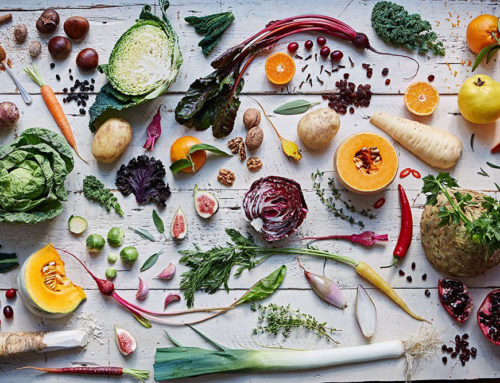
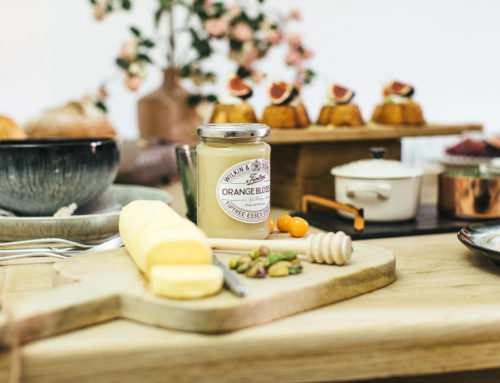
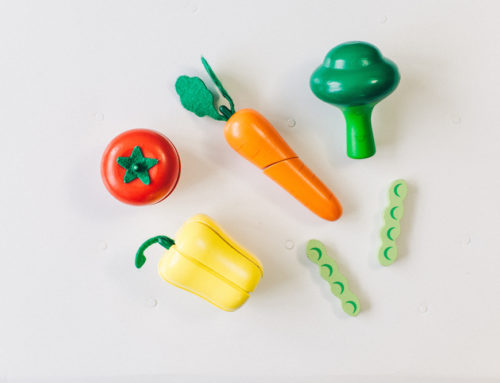
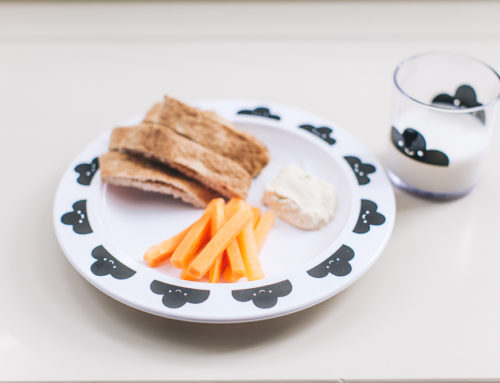
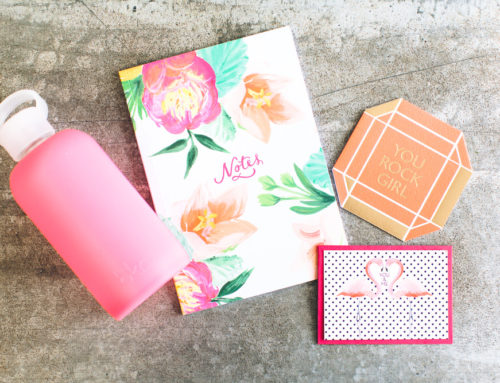
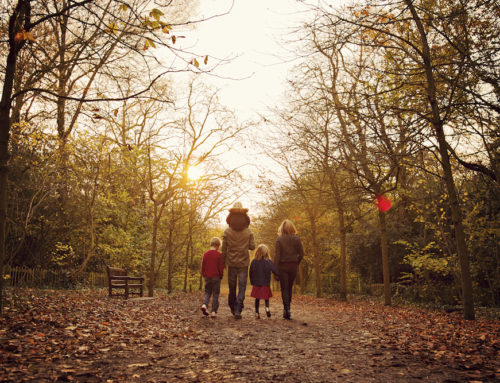
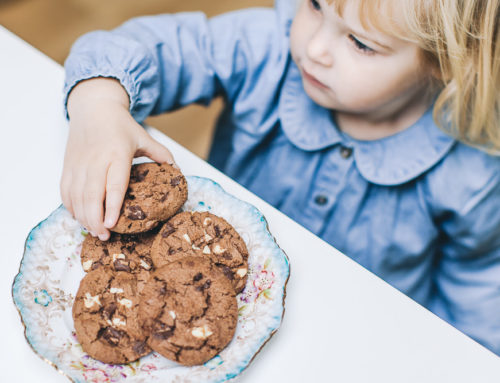
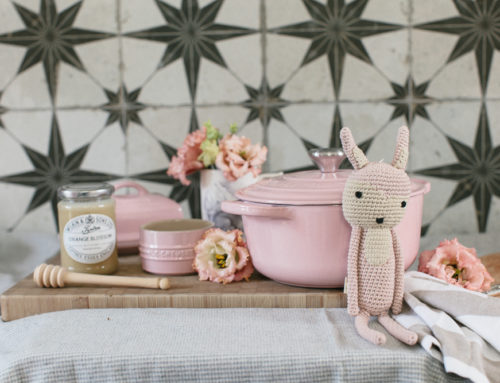
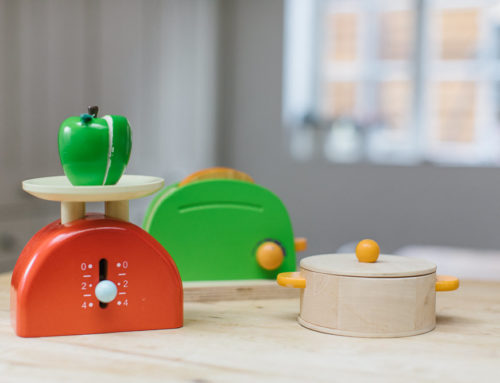
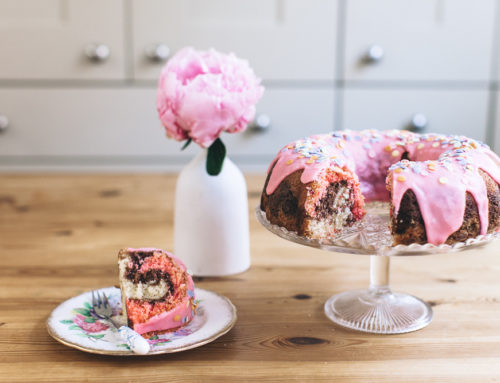
I have done baby led weaning with my son, as I’d seen some other mums do it, and loved the idea. For the first few weeks he seemed really hungry but not able to satisfy his hunger with gumming on vegetables, so I used to offer his finger foods first, and then take whatever he didn’t eat and mash it up to feed him. After a few weeks I didn’t need to do this because he was chomping his way through everything!
I recommend BLW to all my friends, it’s such fun for the children and easier for parents!
That’s a good idea to mash up the left over bits/bits they can’t eat yet Jane, thank you 🙂
And yes, it’s amazing how quickly they learn to chomp even without teeth!! x
We’re not quite ready for weaning yet but our 18 month old Labrador/Hoover
mix is SO looking forward to it when the time does come. Reckon I’m going to need a very sturdy high chair and a very efficienct floor mop.
The dogs love it Steph!! Elle now drops things on purpose for Drake, it’s hilarious!
I’m definitely going to be investing in a steam cleaning mop sometime soon, just waiting for one of those Homebase discount weekends!! x
We started weaning Juliet when she was 4 and a half months because she had gone off her milk, was waking up all the time and generally being quite unsettled. And I was desperate. All the things they suggest you don’t do! And she wasn’t ready at all. Which caused more frustration on my part and tears. Due to the aforementioned not sleeping!
Luckily we went on holiday at 5 months and the break really helped me get some perspective and chill out and we started again at 5 and a half months. And it was much better! I do a combination of baby led and spoon feeding and it works for us. For breakfast she has banana which she feeds herself and then baby porridge from Boots which she loves. Lunch is entirely finger food. Toast or cheese sandwiches, sticks of cucumber or peppers or her new favourite sweet potato wedges. (The skin is great for her to grip whilst she sucks off the actual potato! Then dinner is more finger foods – normally various bits of boiled veg or pasta and then some purée and a yoghurt.
We have the yeo called little yeos which are sweetened with grape juice instead of refined sugar. Juliet’s favourite purees are those with butter beans, cheese and vegetables. We’re starting to introduce other foods this week with fish and spaghetti bolognaise.
Because Juliet went off her milk so much spoon feeding was important for me because I wanted to know she was getting some food. But I do more BLW than spoon feeding because it’s more relaxed and much more fun for Juliet which is the most important thing. We’re yet to find anything she won’t eat which I love as well! Also, I can get on with dinner or other jobs in the kitchen when she’s sucking on some brocoli! She’s also been very good at sorting herself out when she takes too much food in and starts to choke. She coughs and moves the food back to the front of her mouth which is a relieve to watch but also still terrifying!
Aw bless you Jennifer, I think lots of people go through a fussy stage at around 4 months – Elle definitely woke more frequently than she had been doing before.
Sounds like you’ve got a great balance going on now though, potato wedges are a hit here too – and yep Elle does the exact same thing with sucking the flesh off the skin. Some of my friends babies had random ‘off milk’ periods too and it is worrying, so I can understand why you wanted to know that she had eaten something.
I bet Juliet LOVES spag bol, it seems to be a baby favourite. I’m hoping for some nice new recipe inspiration too. Have you done pancakes yet? They are great cut up into strips and there are lots of low sugar recipes out there! x
Pancakes made using just banana and egg (no, really!) are amazing! So quick and easy to make and very tasty too. As my son has a cow’s milk allergy, I had to do some outside-the-box thinking!
I was going to suggest this Rachel – but I tried to make these and they were awful! I think maybe I had too much egg to banana, so next time I’ll try a smaller egg as they do sound yummy x
When I tried them they were dreadful too – I don’t know what I did wrong but they just didn’t work!
Pancakes is an excellent idea! I think they’ll be on the menu for brunch this weekend! Thanks for the tip. X
Hi! Silly question alert but do you cook the sweet potato wedges in oil? And if so what kind? I’ve literally just started weaning my little girl and me and hubby love sweet potato but normally I put spices on so wouldn’t cook them as I normally do!x
Also, other people’s suggestions for foods would be great because I do feel like I give her the same stuff all the time!
I was incredibly excited to start weaning my son at 6 months. The first thing we tried (after breastfeeding him until that point), was cows milk and baby rice. He broke out in a hot rash all around his mouth, with swollen lips – it turned out he had a cows milk allergy! That’s in a nutshell, it actually took around 4 months of GP, peadiatrician, hospital appointments, to get to that diagnosis. We were prescribed special formula which we could introduce to him slowly as I decreased the breastfeeds, although it tasted horrible and was a REAL struggle. The first day I got him to drink a cup of formula without tears from either of us was a real triumph! I was worried about providing a dairy free diet for him, but actually it wasn’t as bad as I feared. Joyously, at around 18 months he was re-tested and given the all clear – hoorah!
How horrible for you both Rachel – so frustrating that it took so long to diagnose something that seems quite obvious in hindsight! I think there’s actually quite a lot of ‘free from’ recipes out there now and you clearly did a great job of giving your little boy things he needed to grow while avoiding the nasties.
And hooray for the all clear 🙂
x
The more I think about it, the more I realise that whatever you do, it’ll most likely be fine in the end. It’s easy with hindsight I think, but in the moment I know I was pulling my hair out more than once! My now 4 year old refused spoon and often wouldn’t even get into high chair (scream bloody murder in fact). I wanted to do baby-led weaning with him, but in the end he mainly survived on Ella’s Kitchen pouches, French toast and scrambled eggs. He would not let me feed him until he was around 2 and decided that I had to spoon-feed him every meal! Go figure 🙂 Now at 4 he would even try odd foods like spinach of a bit of dill! And having a pick your own farm nearby really made a difference as he’d eat berries and fruit that he helped pick, but not the ones we bought from a shop! The only part of baby-lead weaning that went to plan for us was weaning off the breast – and that took a looong time! But since we had a major fight for breastfeeding to start with, I wasn’t going to spot abruptly, so he weaned around 3. I guess him being breastfed what made me more comfortable with him not eating much, as I knew he was still getting nutrient with breastmilk.
I love this comment 🙂 thanks Antonina!
And well done you for conquering BFing then doing it for as long as your little one wanted x
Ah, weaning. We held out to 5 and a half months before starting a little bit of baby rice mixed with breast milk which Samuel loved, then moved him into purées. We did a bit of BL and puréeing as I wanted to make sure he was getting everything he needed and he picked up (literally!) self feeding quite quickly. Favourite early foods were steamed courgette batons (weird eh?!) porridge with mashed banana, cooked pasta shapes and pancakes (made with ‘NO EGG’ substitute as after giving him his first taste of scrambled egg at 6 1/2 months it became clear *very* quickly that he was allergic – completely confused me as I ate eggs all through pregnancy and BF’ing!)
The thing that I hadn’t foreseen though was how fickle he was going to be – one week he loves blueberries, the next he won’t even entertain the idea of them. Ditto cauliflower cheese, fish fingers and orange segments. Go figure.
HA Elle is so fickle too! They like to keep you on your toes don’t they?! xx
Ive just started weaning my 6 month girl and like you she’s having whatever we have most of the time either as finger foods or mashed. I did the same with my little boy and touch wood he’s never been a fussy eater!
One if my go to lunch options is pancakes. You just have to mix together a cup of flour, an egg, whatever fruit or veg you want (banana, grated pear, roasted squash mashed up- anything really) and add as much milk as is needed to give the batter a dropping consistency. Then cook for a few mins on each side.
There’s no doubt about it- weening is definitely a faff though!
Thanks for the recipe Ella, that’s so easy to remember too.
I’m kind of hoping this approach will mean that Elle isn’t fussy in the future :S but having spoken to Mums of toddlers, I think they all have their moments don’t they? x
We have been doing a mixture of BLW and purée. Our little girl also has a cows milk protein allergy which we discovered around four months. After two months of a dairy free diet for me (which as I’m vegetarian too I found very difficult. I was starving alllllll the time!) I was so ready to stop breastfeeding and her to love her food, which of course didn’t really happen! It’s only been in the last couple of weeks that she has really started to enjoy her food. She demolishes anything with toast! Cue avocado green smush everywhere.
I am a bit stuck for dairy free breakfast ideas and this is mostly where she ends up with a fruit pouch maybe mixed with baby rice. At the weekends then she tends to have eggy bread or the egg & banana pancakes, but otherwise I’m a bit stuck for ideas! A lot of the baby porridge/baby brekkie items seem to have milk in. I spend so long in Sainsburys reading the back of packets that I would love some new ideas!
Can your little one have oat based milks Debs? Like Oatly? Then you could give her cereals like Oatibix/Weetabix.
Crumpets go down well here too – I *think* they are dairy free. Try nut butters with them – I can eat cashew butter straight from the jar it’s that good.
And how about muffins? These look delish, I think if you reduced the sugar content and avoided the chopped nuts, they’d be fine for babies http://www.jamieoliver.com/recipes/fruit-recipes/dairy-free-apple-muffins/#9QZkCoKaxwPxSYIO.97
I might give them a go this weekend actually, I’ll keep you posted!
x
Yes oatly is a good idea, I have tried her prescription formula on cornflakes but the milk smells like potato peel so I just feel for the poor little love. It is just so confusing as dietician said yes to soya, paediatrician said definitely not. Confused much?!
Oh I had assumed crumpets would have dairy so will definitely have a look next time we go shopping. If not I’ll have to get baking with a dairy free recipe!
Those muffins look delicious, I think I might eat them all myself haha! Please do let me know how you get on! x
Hi Debs!
How are you getting on with finding dairy free things? I tried the muffins, but added less sugar – to be honest I wouldn’t make them again! I think because of the ground almonds they were v crumbly and almost like a savoury scone because I took out most of the sugar. I added blueberries for sweetness as an alternative and Elle did munch them all, but they weren’t a very satisfying bake if that makes sense (!)
Fern x
Hello, my little girl was allergic to milk and is still allergic to eggs. We used to give her alpro soya junior (there is a giraffe on the front of the carton) and that allowed us to give her cereals that were milk free (surprisingly lots do contain milk even when dry). We did baby led weaning so Weetabix was a good choice for us, we also used some the Ella kitchen cereals and also ready brek (ready brek is labelled as may contain milk but we found it fine). Hope this helps
Thanks Tinny! I’m a bit confused about it all to be honest as the dietician said try soya and recommended the alpro junior but the pediatrician said not to try soya until she is one and he would like to try reintroducing dairy first. His logic made sense as he said 1 in 3 who are allergic to dairy would also be allergic to soya and given her age and that she’s teething etc it would be hard for me to tell if it was the soya she was reacting to or something else
Did you find most things that said ‘may contain milk’ were okay?
Do you mind me asking what age your daughter grew out of the milk allergy?
Thanks again!
Oh yes, I think you are right re 1 in 3 also being allergic to soya. We had already tried bread which had been made with soya flour (a lot breads are surprisingly are) so we knew it was ok. I would say Maisie had mostly grown out of her allergy by 18 months. She is two now and I still can’t get her to drink cows milk but I think this is now a taste preference rather than an allergy as she takes it in her cereal etc (and she tells me she doesn’t like it!). She is such a cheese fiend now wouldn’t believe she used to be allergic!
What a great article! We didn’t plan to just do baby led weaning – I initally was doing a combination of both baby-led and purées. Started at 6 months as I didn’t feel my little boy was ready before then (no teeth etc). He quickly refused a spoon and now at 10 months loves to shovel everything in quickly before it can get taken away from him! I almost can’t believe how much he can manage to eat without any teeth to chomp on things. It was hard at first to think of things to give him but the River Cottage book helped a lot and good recipe tips from friends. I discovered recently he will take an Ella’s Kitchen pouch (useful when you are pressed for time or out and about) but only if you let him suck it out himself. These little monkeys constantly surprising us.
Have also found his hand-eye coordination is very good and get comments at how good he is at picking things up and passing objects from hand to hand. A x
Great post! We’re 4 months into weaning now after starting at 5 months due to a very hungry baby! We started with the traditional baby rice and then various pureed veg, before moving onto finger food. Cooked brocolli was a huge hit, the stalk is the perfect handle for little baby hands!
I must confess that the idea of baby led weaning did scare me slightly, as choking is a huge phobia of mine. As you mention, they do seem to sort themselves out when they stuff too much in (Finlay had 4 teeth at 6 months which made it slightly more scary as he could bite off chunks!) and this has helped to reassure me!
Cous cous has been our lunch time favourite recently, very easy to cook and freezes well, and can be mixed with cream cheese, mashed veg, etc.
Fern(!) is 9 months and you have had an identical approach to us, I could have written this word for word. Friends have got so hung up on what health visitors say we SHOULD be doing and how much they ought to be eating when really their main source of nutrition is still milk and food is fun before one.
We’re now using the Jamie Oliver Everyday Superfoods book which is not aimed specifically at weaning babies but really lends itself to healthy, interesting family meals that are easy to share with an under-one. The granola dust in particular is a breakfast winner!
Hooray for little Fern Philippa 🙂
It’s difficult because health visitors all seem to say different things, but I think you have to go with your Mummy instincts don’t you?
The Jamie Oliver book sounds great, I’m also coveting the River Cottage Veg Everyday book – might have to ask for both for Christmas. Granola dust sounds delish and I’ve yet to find a granola recipe I really love, so this could be the one!! x
Lovely to read your story! Sounds like you’ve been on one of our weaning workshops! One of the problems that people face when it comes to introducing solids is the wide ranging (and often incorrect!) advice that is touted about by everyone from your great Aunt to the latest ‘child expert’! Then it’s about having confidence in your little person as a human who instinctively will want to eat, and of course confidence in yourself to let them 😉
We loved weaning.. Tried puree for a couple of days but Zach just wanted to eat what we had so we went with that. He is 22 months now and he will eat most things although is very good at refusing at the moment. Our floor gets covered and we do now have a fat dog!
I’m just concerned that you’ve printed about sticking your finger in a child’s mouth especially if they really are choking . If you accidently push the food down rather than out you could make matters worse. There is advice on a choking child on the St John’s website
Hi Helen, thank you for mentioning this – I really didn’t mean to advise anyone to do this if their child was actually choking. (Here’s a link to the St John’s page you mention if anyone would like guidance on what do to if your child chokes http://www.sja.org.uk/sja/support-us/our-campaigns/baby-choking-the-chokeables.aspx)
To clarify, it works for us when Elle has a large chunk of soft bread stuck to the roof of her mouth or if she tries to eat some skin of a piece of fruit or a potato which is quite long, and I can see that she definitely ISN’T choking. I hope that makes sense.
It sounds like Zach is doing great and I’m sure we will encounter some food refusal toddler style in the future…x
Like some others, i did a mix of BLW and purées when I was weaning Juliet. We’d have one meal of finger foods, and I’d also give her some of one pouch of Ella’s kitchen or Plum purée – so that I knew she was getting something! It worked quite well for us. I literally didn’t adapt our diet at all for her, so as long as we weren’t having smooth soup (unlikely, as Mr H doesn’t believe it constitutes a full meal) it wasn’t a problem. I have some great pictures of her eating a laksa I’d made – slurping up noodles coated in coconutty soup!
A good BLW recipe is a crustless quiche type thing. I make it in silicone cupcake cases, but you could probably use a normal cupcake tin. You just beat up a couple of eggs with a splash of milk and add ‘stuff’ to it – grated cheese, ham, leftover chicken, smoked salmon trimmings, tomatoes, touch of mustard for taste (not too much or I get complaints of it being ‘spiky’!), etc, then pour it into the cases and pop them into the oven until they’re cooked. They’re just the right size for little hands and good to eat hot or cold so it doesn’t matter if they sit on a tray for a while. Also good for picnics (not that it’s really picnic weather now…).
Sara I’ve been doing these crustless quiches as lunches this week and they’ve gone down a treat 🙂
Thank you x
I have done baby led weaning with both of my children and we have loved it. My youngest is almost 9 months and the 4 of us being able to sit down and all enjoy eating our meals at the same time is priceless.
I found both my girls got very bored very quickly with the finger food option so we went down the very messy (ridiculously messy) option of letting them eat with their hands so they could eat the chilli’s, stews and spag Bol dinners.
They went down a treat but the clean up operation isn’t for the faint hearted. We quickly learned how to keep the mess as manageable as possible.
Buy a cheap shower curtain to place on the floor under the high chair, buy a cheap and easy to clean high chair (ikea one is my fave, however we learnt this after buying a very expensive and hard to clean highchair) and it’s easier if your baby eats in just their nappy as they literally are covered by the end of mealtime lol!
Hi Nicci!
I know, the mess is definitely not for the fainthearted – I think I need to embrace the mess a bit more and let her loose on some more tasty food, especially as this week she’s refusing the spoon again!! Honestly, things never stay the same for long do they?!
We have the Ikea highchair too, would definitely recommend it for easy cleaning and dismantling! It’s v portable too.
And yes, we often have dinner in just a nappy, although now it’s getting colder this is harder to do!
x
A really great read! This was a difficult stage that suddenly crept up on me, just as I was thinking that I had nailed having a baby…!! I wish I had read this during out weaning stage. Also, a very good tip about the short fingernail. Xx
Ha! The best tip is to get a dog…it would’ve been massively helpful to have a canine clean-up crew for our BLW adventure!